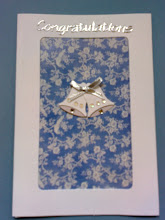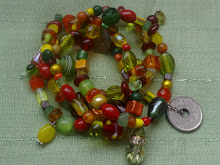You may laugh, but at that time my parents were fairly clueless about constitutes appropriate reading for a child and my dad picked up a pile of the magazines from somewhere dated from around the 70’s onwards. I was hooked from the word go on the articles, jokes and the condensed novel at the end of every edition. I’m sure I’m not the only child either, I think in England there is a certain thinking that the Readers Digest is for older people or not very cool. I have an inkling, in other countries, certainly the sub-continent, this isn’t always the case and it is still a popular read there.
Anyway, I learnt a lot from those old magazines, although if you asked me what, I doubt I would be able to give you a definitive list. One thing that did catch my attention from those old magazines was the Season Theory for organizing your wardrobe. It made a lot of sense to me and influenced me all of these years. More recently it seems to have been forgotten, when I mention it to fashion-conscious people a few years younger than me, no-one seems to know what I am talking about it. I looked around a bit and found that colour theory was based on the book Color Me Beautiful by Carole Jackson which was very popular in the 1980’s and then faded in the following decade.
The season theory basically suggests that the colouring of your hair, skin and eyes can be grouped into one of four groups consistent with the seasons. These groups then help us to identify which colour clothing suits us. So people with fair colouring and blonde or light-coloured hair and eyes tend to be “Spring” or Summer, people with red or brown hair and medium or olive skin tones tend to be “Autumns” and people with strong colourings such as dark hair and skin, or very pale skin and dark hair tend to fall into the “Winter” category. There is a basic description here.
image source - from Cardigan Empire which has a great resource about colour palettes for your colouring.
The theory asserts that any season can wear any colour, but that particular tones will look better on some seasons than others. So if you are a “spring”, then strong or bright colours will make you look washed out or ill, whereas softer shades will bring out your colouring. In contrast, if you are a winter, then your strong colouring means you can wear bold colours easily.
Funnily enough, being of South Asian origin, you would think that my family would all be typical “Winters”, but that hasn't turned out to be the case. I and two of my sisters are Winters, so we can wear bright jewel colours well that look striking and dramatic. Fashionista is an Autumn and can carry off shades of brown, gold and olive which make her glow but make us look dull. I've realised that where Little Lady and Gorgeous are Winters like me and wear strong, bright colours well, Little Man has an olive colouring with brown hair like his aunty Fashionista and is an autumn like her. So I tend to buy my boys similar clothes but in different colours, maybe a soft grey or a solid blue for Gorgeous and a brown or olive for Little Man. Darling has brown hair like her big brother, but a pale, almost peaches and cream colouring, making her a spring. So she suits pale, soft colours like mint, baby pink and peach.
image source for colour palettes above
It seems that the colour theory has developed from four broad types to 16 sub-types of the four seasons, so is a bit more complex now. I still like season theory because it helps me to easily avoid colours that don’t suit me and means that you can wear any colour, you just have to find the right shade. Anyone else remember colour season theory? Did any of you used to read old copies of Readers Digest? Better still do any of you still read Readers Digest?




































I remember reading about the season theory too, although I have no idea how to find out which one I am!. Yet, stronger colors and jewel tones look good on me, so I'm guessing I'm a winter :)
ReplyDeleteI loved Readers Digest! Still do, whenever I go back home to India, but seriously, the older Readers Digests were so much better! I remember reading about this too :-)) I also loved how most of the jokes in RD were so nice and clean.
ReplyDelete